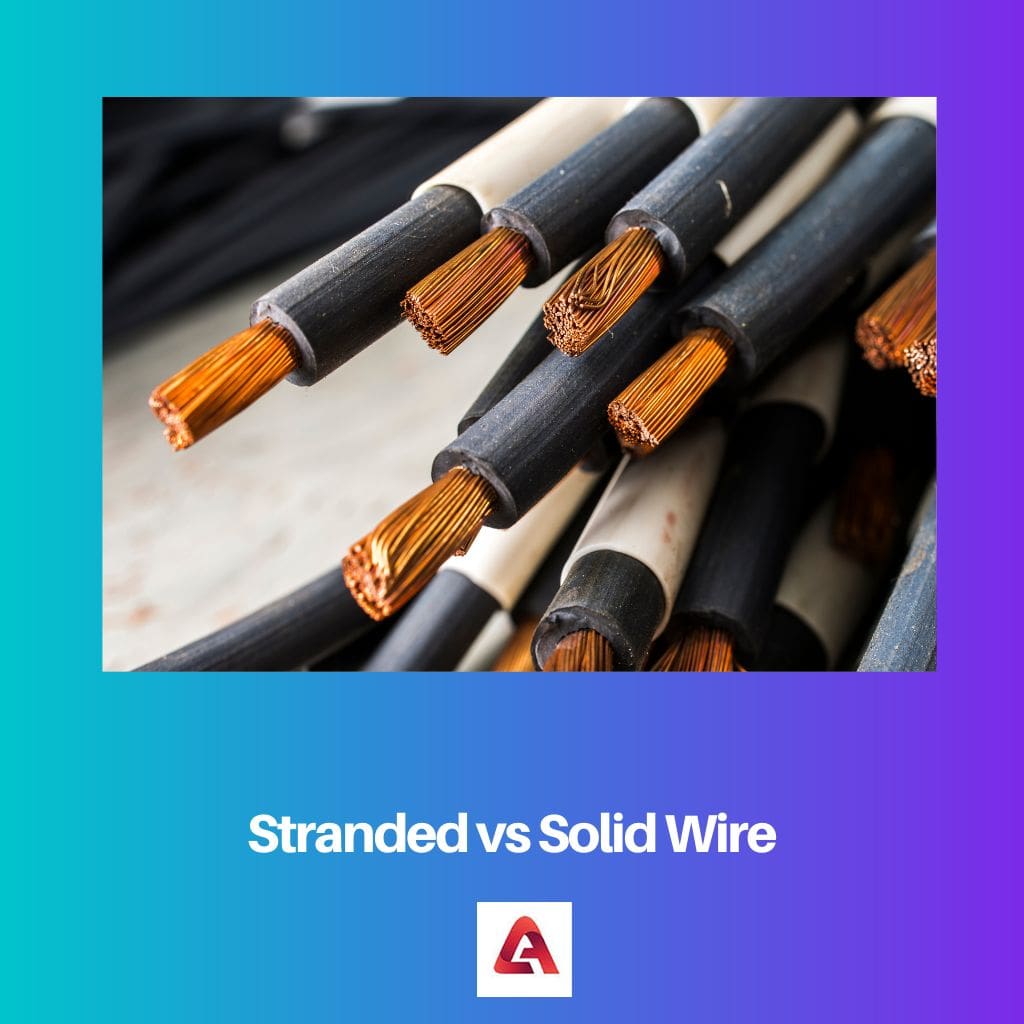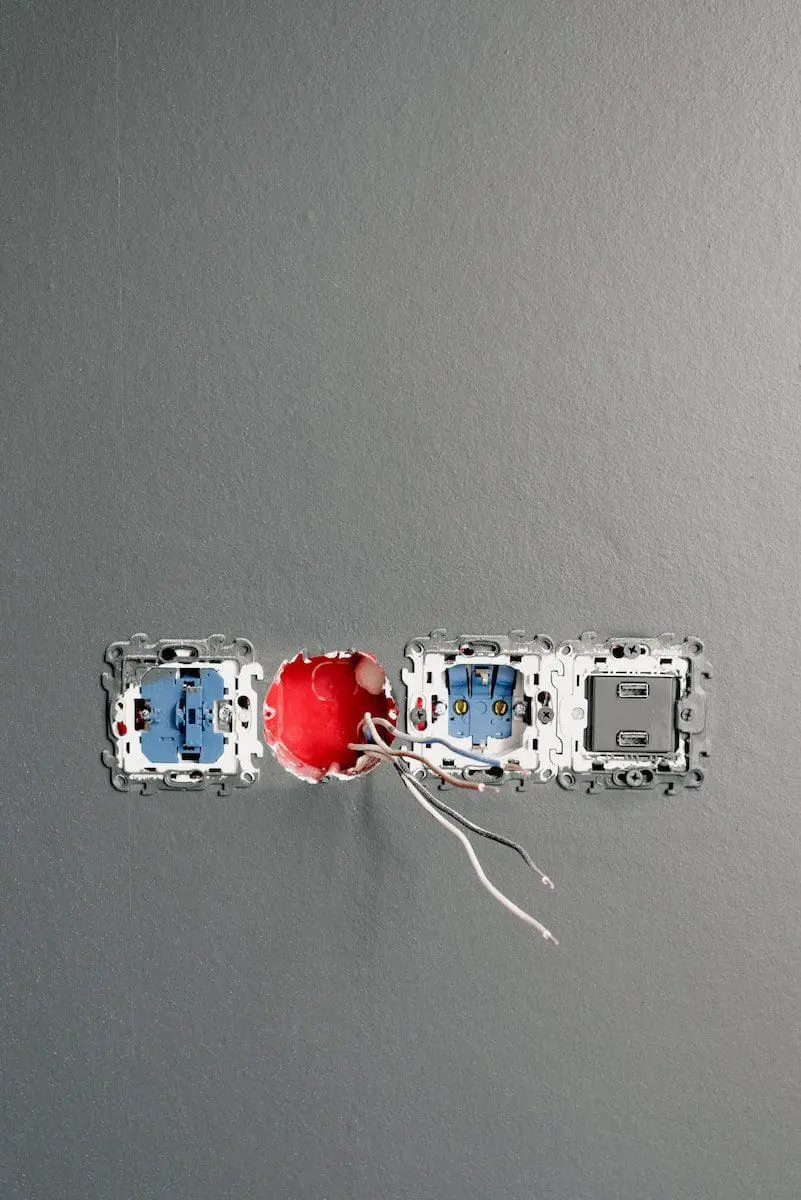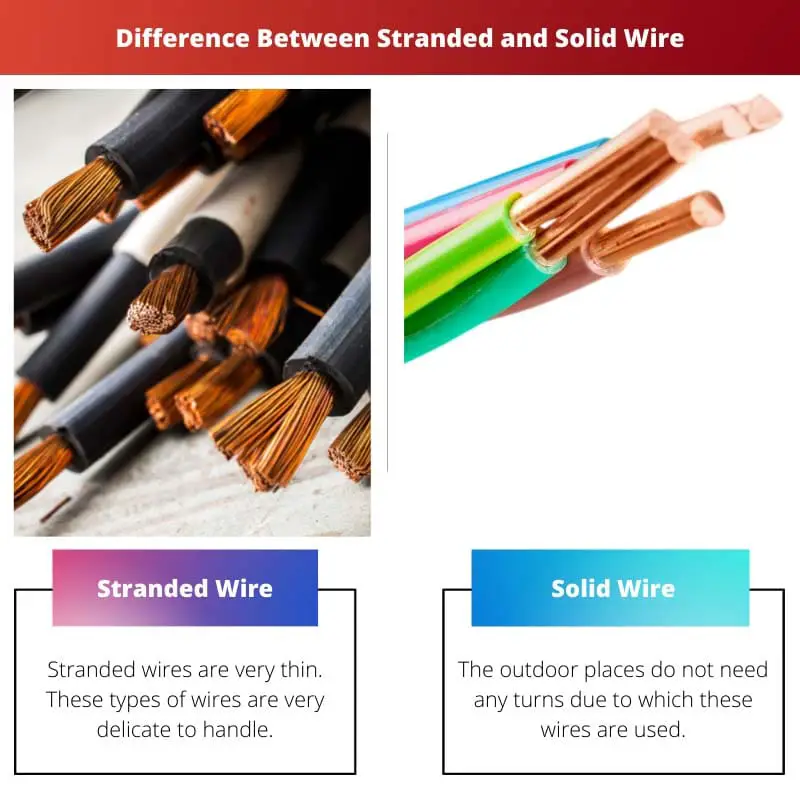Wires are used by engineers, and the type of wire depends on the job. The wires are chosen as per their applications. Some points need to make sure so that the wire serves the right way.
The factors to look at are a gauge of wire, type of metal, amperage load, and the most important is the price of the wires.
Key Takeaways
- Stranded wires consist of multiple thin strands of wire, providing flexibility.
- Solid wires have a single solid conductor, offering better signal quality.
- Stranded wires are ideal for applications requiring movement, while solid wires suit stationary installations.
Stranded vs Solid Wire
The difference between Stranded wire and Solid wire is Stranded wire is twisted in nature and is used in indoor applications, but Solid wire is used in outdoor applications. Stranded wire is used in homes because there are turns in the walls, due to which the twisted wires help more, but Solid wire is a strong metal which is a benefit in heavy-duty applications.

Stranded wire is a collection of twisted wires. These wires are very thin. It is not made with solid metal. These types of wires are used for connection in indoor places. This is used in all types of indoor applications. These wires are bundled together. It is used in circuit boards.
Solid wire is made of metal. It can sustain all types of weather. It is used when there is a need for high currents. This type of wire can carry high power in a building or a big place. These wires are used in big places or association buildings.
The outdoor places do not need any turns due to which these wires are used. The outdoor places are comparatively big, so the stranded wire does not fit in.
Comparison Table
| Parameters of Comparison | Stranded Wire | Solid Wire |
|---|---|---|
| Solid Metal | No | Yes |
| Flexible | Highly | No |
| Malleable | Highly | No |
| Split | No | Yes |
| Twisted pattern | Yes | No |
| Applications | Indoor | Outdoor |
What is Stranded Wire?
Stranded wires are very thin. These types of wires are very delicate to handle. The small wires are twisted together so that it forms a collective wire. This is used in indoor connections. These can easily turn and very thin du et which they can be fit into walls and can be attached anywhere.
These wires are used in speaker wires, electronic devices, and circuit boards. These wires are very flexible due to which it is used during turns or where turnings are there. They can be seen in car doors even where the doors turn when opening and closing.
These are used in indoor applications. They are malleable. They are not made of solid metal. They are twisted so that they can face any type of weather, and there are fewer problems in the wired connectivity. The twisted behavior saves the wires from split or sever.
In homes, the stranded wire is very safe to use. It serves right and prevents any attack due to electric connections. It can withstand any climatic conditions. Engineers in daily life use these stranded wires in the home applications as it has to be turned according to the walls.

What is Solid Wire?
The outdoor places do not need any turns, due to which these wires are used. The outdoor places are comparatively big, so the stranded wire does not fit in. These types of wires are very heavy. It has anti-corrosive properties. It does not get affected by frequent movement due to any resistance.
It is used for connections in outdoor applications. This can be seen in large buildings or big shopping complexes. It can transfer high currents. This does not need any turnings or any kind of movement. This is made of solid metal, due to which it is very heavy.
It can withstand any weather very easily as it is not thin and very thick. It has anti-corrosive properties. These types of wires are not so costly. They are available at a low cost. It is used for heavy-duty connections. It is used in building infrastructures for wiring.
The wiring depends on the purpose of the wires. These wires are not very flexible, due to which there are not used in turnings. These wires are not twisted and can split somehow if not properly taken care of. These wires are used in outdoor applications and are not used in indoor connections.

Main Differences Between Stranded and Solid Wire
- Stranded wire is not made of solid metal, but Solid wire is made up of solid metal.
- The flexibility of Stranded wire is more than Solid wire.
- Stranded wire is more malleable than Solid wire.
- Stranded wire will not get split, and solid wire can get split.
- Stranded wires are twisted, but Solid wire is not twisted.
- Stranded wires are used in indoor applications, but Solid wire is used for heavy-duty outdoor applications.




